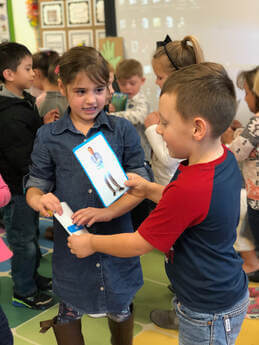TESOL Trainers can show K12 teachers how to engage their students in the traditional and remote classroom. Our professional development workshops show teachers how to meaningfully engage students with the content, the language, and one another.

Student engagement is the most important task a teacher must undertake. If learners are not engaged in meaningful ways in the K-12 classroom, there is no point for teachers to continue. Without student engagement, learning is not possible.
TESOL Trainers offers face-to-face and remote teacher training seminars on how to engage students in meaningful ways from the beginning to the end of every lesson. We can show K12 educators how to successfully engage their students 90-100% of the time no matter what subject they teach.
Remote learning have brought on new challenges to engaging students, but TESOL Trainers provides K12 teachers with practical, research-based strategies that can transform how teaching and learning occur.

If your teaching staff wants master the art and science of student engagement, invite TESOL Trainers to your district today! Our experiential workshops are engaging from the beginning to the end as we show teachers strategies and techniques any K-12 educator can employ to make student engagement sustainable and systemic. We don't lecture teachers on student engagement; we show them practical ways they can get students to consciously engage themselves in their own learning processes.
TESOL Trainers can help every educator transform how teaching and learning occur by show teachers the importance of student engagement, challenges to sustaining it, and strategies they can use to overcome them.
Student engagement is vital. Every K-12 teacher knows this. If students aren't engaged, a lot of reteaching must occur. Instructions must be given again; explanations have to be repeated; time slows to a halt. Teachers (and learners) lose patience. People begin to get frustrated. Learning (and teaching) becomes a chore. When the lesson ends teachers and their students feel dissatisfied about the lesson.
Fortunately, teaching and learning do not have to be like that. With some understanding of student engagement, a few well-honed strategies, and some self-awareness, teachers can easily connect students meaningfully to the lesson. Under these conditions, learning becomes more enjoyable, time passes quickly, and everyone looks forward to the next session.

There is a huge difference between meaningful student engagement and meaningless student engagement. Students may become engaged when the teacher wears a funny costume, sings out instructions, or tap dances on the desks; however, these may not meaningful and may not lead students toward the lesson's objective. Meaningful student engagement leads students towards achieving the objectives.
Challenge #1: Instructions
Students don't listen to instructions. Sometimes students act like they don't care or sometimes, they stop paying attention until the activity begins. Then, they complain that they don't know what they are supposed to do.
Challenge #2: Teaching content
While the teacher is delivering the lesson, students tune out. While tuning out and tuning in is natural, students who stayed tuned out lose the opportunity to learn what the instructor is attempting to teach.
Challenge #3: Group work
During cooperative learning time, some students disengage. Even though being with peers is more appealing (to many students) than being with the teacher, many students do not engage themselves in group work activities.
Strategy #1: Make 'em interactive
If the teachers are the ones who are doing all of the explaining and modeling while giving instructions, students tend to disengage. TESOL Trainers can show teachers how to make giving instructions digestible and engaging.
Strategy #2: Make 'em active
Students to be drawn into a lesson; they need to have more of a task than "just listen". Students need a purpose to pay attention, and they need a way to demonstrate to the teacher and themselves that they are engaged.
Strategy #3: Make 'em accountable
Students need meaningful accountability that is more than threats or failing grades. Students who are held accountable for their participation stay engaged longer and find the experience more enjoyable.
Student engagement is paramount to every aspect of learning. There are many benefits to focusing our attention on meaningful student engagement:
Many have never been taught how to measure they own engagement levels. Many students may not be aware of why they engage/disengage during class. Many students may not even know that they have the power to stay engaged. TESOL Trainers empowers teachers with real lessons, practical strategies, and easy-to-implement techniques.
Contact Dr. John Kongsvik, the director of TESOL Trainers, to learn more about how our professional development workshops on student engagement will set your teachers and students up for success.
Become part of our TESOL network and gain access to valuable content!